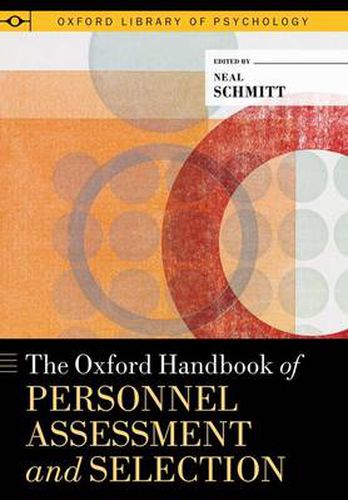Readings Newsletter
Become a Readings Member to make your shopping experience even easier.
Sign in or sign up for free!
You’re not far away from qualifying for FREE standard shipping within Australia
You’ve qualified for FREE standard shipping within Australia
The cart is loading…






Employee selection remains an integral role of industrial/organizational psychology. Modern demands on organizations have required adaptations on the part of those responsible for selection programs, and researchers in evaluating the impact of these adaptations as well as their implications for how we view human potential. Many of these developments (web-based assessments, social networking, globalization of organizations, for example) determine in great part the content and focus of many of the chapters in this book. The Oxford Handbook of Personnel Assessment and Selection is organized into seven parts: (1) historical and social context of the field of assessment and selection; (2) research strategies; (3) individual difference constructs that underlie effective performance; (4) measures of predictor constructs; (5) employee performance and outcome assessment; (6) societal and organizational constraints on selection practice; and (7) implementation and sustainability of selection systems. While providing a comprehensive review of current research and practice, the purpose of the volume is to provide an up-to-date profile of each of the areas addressed and highlight current questions that deserve additional attention from researchers and practitioners. This compendium is essential reading for industrial/organizational psychologists and human resource managers.
$9.00 standard shipping within Australia
FREE standard shipping within Australia for orders over $100.00
Express & International shipping calculated at checkout
Employee selection remains an integral role of industrial/organizational psychology. Modern demands on organizations have required adaptations on the part of those responsible for selection programs, and researchers in evaluating the impact of these adaptations as well as their implications for how we view human potential. Many of these developments (web-based assessments, social networking, globalization of organizations, for example) determine in great part the content and focus of many of the chapters in this book. The Oxford Handbook of Personnel Assessment and Selection is organized into seven parts: (1) historical and social context of the field of assessment and selection; (2) research strategies; (3) individual difference constructs that underlie effective performance; (4) measures of predictor constructs; (5) employee performance and outcome assessment; (6) societal and organizational constraints on selection practice; and (7) implementation and sustainability of selection systems. While providing a comprehensive review of current research and practice, the purpose of the volume is to provide an up-to-date profile of each of the areas addressed and highlight current questions that deserve additional attention from researchers and practitioners. This compendium is essential reading for industrial/organizational psychologists and human resource managers.